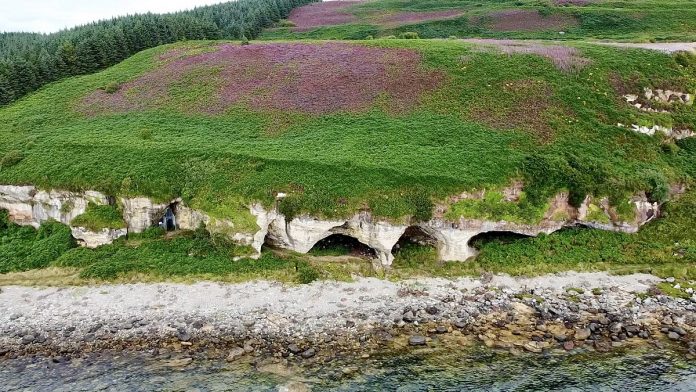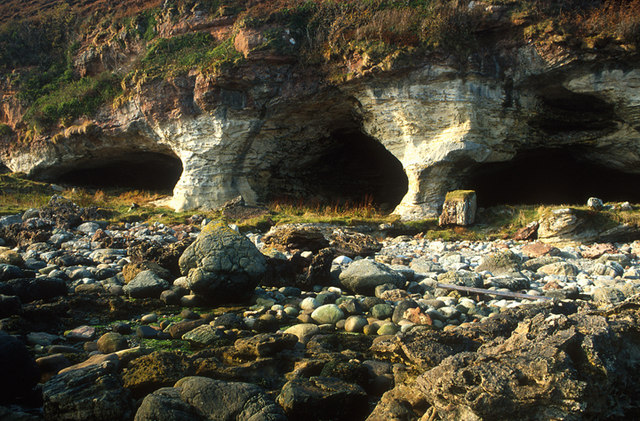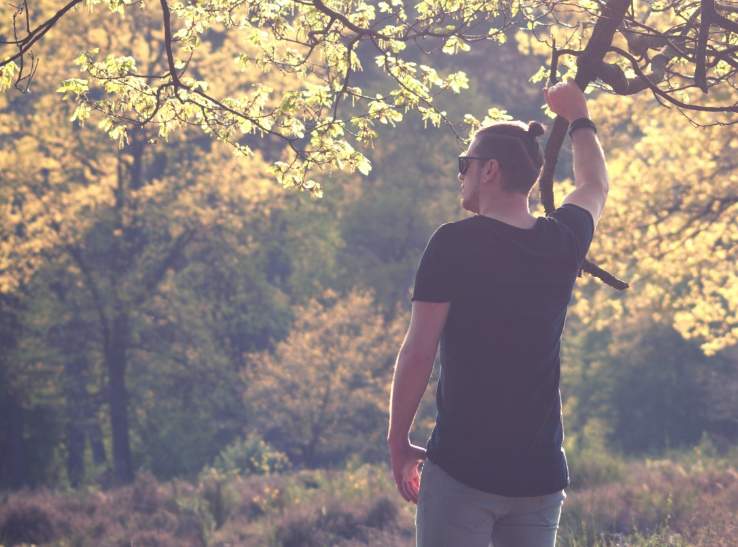A series of seafront caves on the Isle of Arran, north of Blackwaterfoot, is known as Kings Cave. During an ice age, when the land was pushed down by the mass of ice, the caves were formed when the sea was relatively higher, with a high tide around 4 meters (13 feet) higher than now. Stone figures depicting horses are found near the southern aisle’s back. This cave has several examples of traditional cups and ring marks on the southern wall, including a deer and a figure of a deer. There is also an Ogham inscription on the wall north of the cave.
A process known as isostatic rebound resulted in the rise of the land and the formation of a raised shoreline as well as relict sea cliffs as the ice melted. As a result of the raised beach, the hillside above the cliffs is steep, nominally 30 meters (98 feet) above the present high tide. A series of small holes outside and inside the cave may have served as timber bar sockets.
The Kings Cave is said to have been used as a school and for church meetings, according to Kilmory parish church records. It used to be known as Fingal’s Cave before being named after Fionn mac Cumhaill. Currently, this cave is known as Robert the Bruce Cave, as Robert the Bruce sought refuge in this cave. Bruce faced two major defeats during his campaign to oust the English from Scotland in 1306—the first in 1296 and the second in 1307.
On the run from his enemies, he suffered two major defeats. Prior to the Battle of Bannockburn, he stayed in King’s Cave—or saw the famous spider. Even after trying and failing numerous times, the spider didn’t give up and eventually, after numerous attempts, managed to attach its thread. His inspiration came from watching the spider’s numerous attempts to build a web and finally succeeding. This story, however, is widely believed to be apocryphal.
Archeological excavations within Kings Cave were conducted in January 1909. The excavation involved digging a 32-foot-long trench and examining it. In spite of the discovery of some animal bones and a bronze ornament, no other meaningful artifacts were found, so the dig was halted on the fourth day.
Although King’s Cave is a bit of a tourist attraction, it’s set on a raised shingle beach, and its amazing inscriptions continue to draw visitors. Make sure you bring your torch. In the area of pleasant mixed forest, the circular trail offers scenic views across Machrie moor and Drumadoon cliffs, as well as west towards Ireland.










